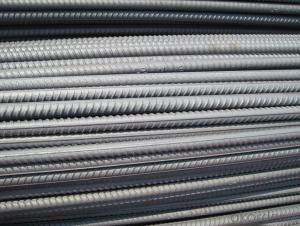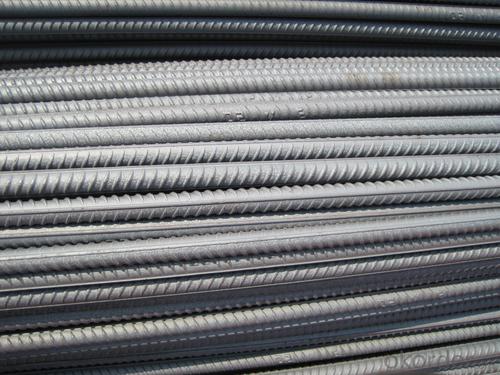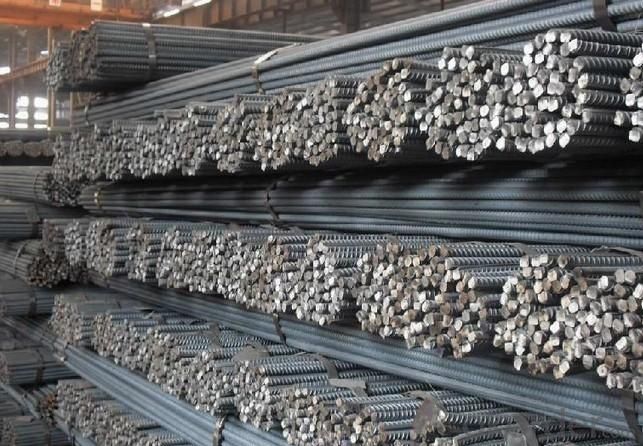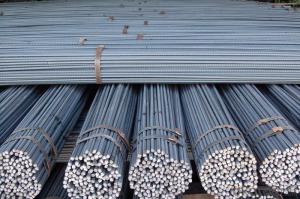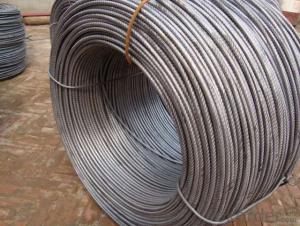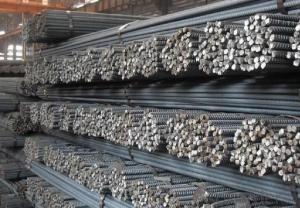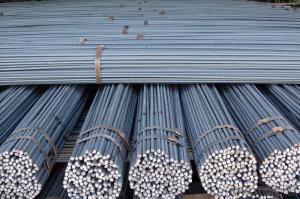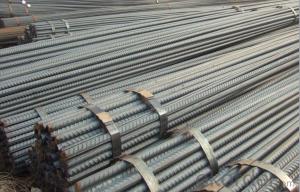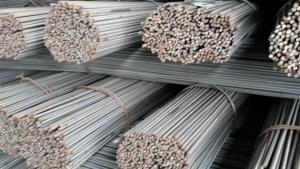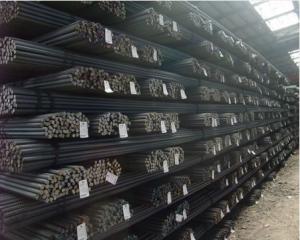High Quality Steel Deformed Bar HRB400 25/28/32mm
- Loading Port:
- Tianjin
- Payment Terms:
- TT or LC
- Min Order Qty:
- 100 m.t
- Supply Capability:
- 10000 m.t/month
OKorder Service Pledge
OKorder Financial Service
You Might Also Like
High Quality Steel Deformed Bar HRB400 25/28/32mm
Product Description:
Specifications of High Quality Steel Deformed Bar HRB400 25/28/32mm:
Standard | GB | HRB400 | |
Diameter | 25mm,28mm,32mm | ||
Length | 6M, 12M | ||
Place of origin | Hebei, China mainland | ||
Advantages | exact size, regular package, chemical and mechanical properties are stable. | ||
Type | Hot rolled deformed steel bar | ||
Chemical Composition of High Quality Steel Deformed Bar HRB400 25/28/32mm: (Please kindly find our chemistry of our material based on HRB400 as below for your information)
Grade | Technical data of the original chemical composition (%) | ||||||
C | Mn | Si | S | P | V | ||
HRB400 | ≤0.25 | ≤1.60 | ≤0.80 | ≤0.045 | ≤0.045 | 0.04-0.12 | |
Physical capability | |||||||
Yield Strength (N/cm²) | Tensile Strength (N/cm²) | Elongation (%) | |||||
≥400 | ≥570 | ≥14 | |||||
Theoretical weight and section area of High Quality Steel Deformed Bar HRB400 25/28/32mm as below for your information:
Diameter(mm) | Section area (mm²) | Mass(kg/m) | Weight of 12m bar(kg) |
25 | 490.9 | 3.85 | 46.2 |
28 | 615.8 | 4.83 | 57.96 |
32 | 804.2 | 6.31 | 75.72 |
Usage and Applications of High Quality Steel Deformed Bar HRB400 25/28/32mm:
Deformed bar is widely used in buildings, bridges, roads and other engineering construction. Big to highways, railways, bridges, culverts, tunnels, public facilities such as flood control, dam, small to housing construction, beam, column, wall and the foundation of the plate, deformed bar is an integral structure material. With the development of world economy and the vigorous development of infrastructure construction, real estate, the demand for deformed bar will be larger and larger.
Packaging & Delivery of High Quality Steel Deformed Bar HRB400 25/28/32mm:
Packaging Detail: products are packed in bundle and then shipped by container or bulk vessel, deformed bar is usually naked strapping delivery, when storing, please pay attention to moisture proof. The performance of rust will produce adverse effect.
Each bundle weight: 2-3MT, or as required
Payment term: TT or L/C
Delivery Detail: within 45 days after received advanced payment or LC.
Label: to be specified by customer, generally, each bundle has 1-2 labels
Trade terms: FOB, CFR, CIF
FAQ:
Q1: Why buy Materials & Equipment from OKorder.com?
A1: All products offered byOKorder.com are carefully selected from China's most reliable manufacturing enterprises. Through its ISO certifications, OKorder.com adheres to the highest standards and a commitment to supply chain safety and customer satisfaction.
Q2: How do we guarantee the quality of our products?
A2: We have established an advanced quality management system which conducts strict quality tests at every step, from raw materials to the final product. At the same time, we provide extensive follow-up service assurances as required.
Q3: How soon can we receive the product after purchase?
A3: Within three days of placing an order, we will arrange production. The shipping date is dependent upon the quatity, how many sizes you want and the plan of production, but is typically 1 month to 2 month days from the beginning of production.
Images of High Quality Steel Deformed Bar HRB400 25/28/32mm:
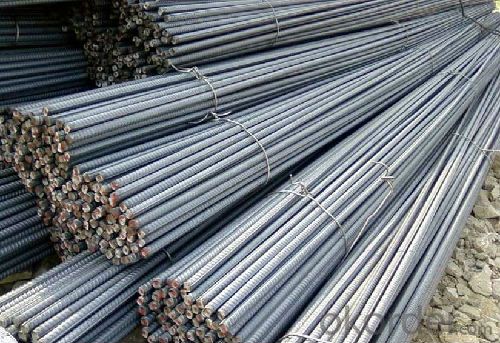
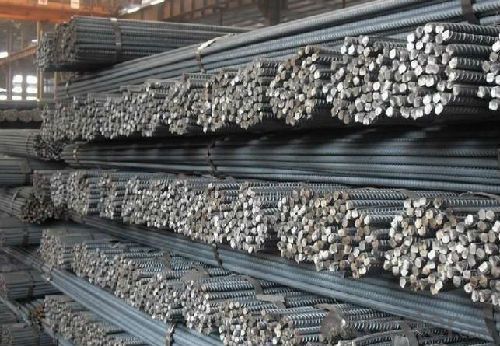
*If you would like to get our price, please inform us the size, standard/material and quantity. Thank you very much for your attention.
- Q: What is the tensile strength of a steel rebar?
- The tensile strength of a steel rebar typically ranges from 60,000 to 100,000 pounds per square inch (psi).
- Q: Can steel rebars be used in the construction of swimming pools or water tanks?
- Steel rebars have the capability to be utilized in the construction of swimming pools or water tanks. They are often employed as reinforcement in concrete structures, thereby enhancing their strength and durability. In the process of constructing swimming pools or water tanks, it is customary to insert steel rebars within the concrete walls and floors to impart additional support and avert cracking or structural failure. These rebars are specifically designed to endure the corrosive impact of water and effectively reinforce the concrete structure against the water's force. Nevertheless, it is crucial to ensure that the steel rebars are suitably coated or safeguarded in order to prevent corrosion, as continuous exposure to water can eventually result in rust. By incorporating steel rebars into the construction of swimming pools or water tanks, the overall integrity and lifespan of the structures can be significantly augmented.
- Q: Can steel rebars be used in tunnel construction projects?
- Yes, steel rebars can be used in tunnel construction projects. Steel rebars are commonly used as reinforcement in tunnel construction due to their high strength and durability. They help enhance the structural integrity of the tunnel by providing additional support to withstand various loads and ground conditions. Additionally, steel rebars can be easily bent and shaped to fit the required design specifications of the tunnel, making them a preferred choice in tunnel construction.
- Q: Can steel rebars be used in dam construction projects?
- Yes, steel rebars can definitely be used in dam construction projects. Steel rebars are commonly used in the construction industry for reinforcing concrete structures, and dams are no exception. The rebars are embedded into the concrete to enhance its tensile strength, making it more resistant to cracking and structural failure. Dams, which are massive structures designed to hold back water, require a high level of strength and durability to withstand the immense forces and pressures exerted by the water. Steel rebars provide the necessary reinforcement to ensure the structural integrity of the dam. Additionally, steel rebars are corrosion-resistant, which is crucial in dam construction, where exposure to water is constant. Overall, the use of steel rebars in dam construction projects is a well-established and essential practice.
- Q: What are the guidelines for preventing steel rebars from rusting during construction delays?
- To prevent steel rebars from rusting during construction delays, the following guidelines can be followed: 1. Store rebars in a clean, dry, and covered area to protect them from moisture and rain. 2. Use plastic or waterproof covers to shield rebars from direct contact with water or humidity. 3. Avoid stacking rebars directly on the ground to prevent them from absorbing moisture. 4. Apply a rust inhibitor or coating to the rebars to provide an additional layer of protection. 5. Regularly inspect the rebars during the construction delay to ensure they remain dry and rust-free. 6. If any signs of rust appear, remove the affected rebars and replace them with new ones. 7. Properly seal any concrete structures or foundations that contain rebars to prevent moisture penetration. 8. Keep the construction site clean, avoiding the accumulation of water or debris that could promote rust formation. By following these guidelines, construction delays can be managed effectively, minimizing the risk of rusting and ensuring the structural integrity of the steel rebars.
- Q: What is the process of epoxy-coating steel rebars?
- To achieve a durable and corrosion-resistant coating on steel rebars, several steps are involved in the process of epoxy-coating. Here is a general overview of the process: Firstly, the steel rebars undergo thorough surface preparation to eliminate any rust, oil, or other contaminants. This can be accomplished through techniques such as sandblasting or chemical cleaning. Once the rebars are cleaned, a primer is applied to enhance adhesion between the steel surface and the epoxy coating. Additionally, the primer provides an extra layer of protection against corrosion. After the primer has dried, the epoxy coating is applied to the rebars. This can be done using various methods, including spray application or immersing the rebars in an epoxy tank. Following the application of the epoxy coating, the rebars are left to cure. This controlled process allows the coating to harden and fully bond with the steel surface. The curing time varies depending on the specific epoxy and environmental conditions. Once the rebars have cured, a thorough inspection is conducted to ensure the uniform application of the epoxy coating and that it meets the required specifications. This inspection may involve visual checks, adhesion tests, and measurements of coating thickness. After passing inspection, the epoxy-coated steel rebars are packaged and stored in a controlled environment to protect them from damage or further contamination. It is important to note that the specific process may vary depending on factors such as the manufacturer, project requirements, and the type of epoxy coating used. Following industry standards and guidelines is crucial to ensure the quality and effectiveness of the epoxy-coated steel rebars.
- Q: How do steel rebars prevent concrete structures from collapsing?
- Steel rebars prevent concrete structures from collapsing by providing reinforcement and strength to the concrete. The rebars act as a framework within the concrete, helping distribute loads and resist tension forces. This added strength prevents cracks from forming and spreading, ensuring the structural integrity of the concrete and preventing collapse.
- Q: Are there any limitations on the maximum length of steel rebars used in construction?
- Yes, there are limitations on the maximum length of steel rebars used in construction. The maximum length of steel rebars can vary depending on various factors such as the structural design, construction codes, and transportation limitations. In general, the length of steel rebars is limited by practical considerations such as handling, transportation, and installation. Very long rebars can be difficult to transport and maneuver on construction sites. Additionally, excessively long rebars may be more prone to bending or sagging, which can affect their structural integrity. Therefore, construction industry standards and codes typically provide guidelines or restrictions on the maximum length of steel rebars to ensure their safe and efficient use in construction projects. It is important for architects, engineers, and contractors to adhere to these limitations to ensure the structural stability and safety of the building.
- Q: How do steel rebars affect the overall sustainability of bridge constructions?
- The overall sustainability of bridge constructions is greatly improved by the inclusion of steel rebars. Firstly, steel rebars play a crucial role in enhancing the longevity and durability of bridges. They reinforce concrete structures, ensuring that tensile and compressive forces are evenly distributed and minimizing the risk of cracks and structural failure. This results in a longer functional lifespan for the bridge, reducing the need for frequent repairs or replacements and ultimately decreasing material consumption and waste generation. Furthermore, the sustainability of bridge constructions is further enhanced by the high recyclability of steel rebars. Once a bridge reaches the end of its life cycle, the steel rebars can be easily removed and recycled. This reduces the demand for new steel production, conserving natural resources and reducing carbon emissions associated with manufacturing processes. Additionally, the recycling of steel rebars helps mitigate the environmental impacts of mining and extraction activities. In addition, the use of steel rebars enables the design of lighter and more efficient bridge structures. Steel is known for its high strength-to-weight ratio, allowing for the creation of slender and visually appealing bridge designs. By reducing the weight of the bridge, less material is required for construction, resulting in lower energy consumption and carbon emissions during manufacturing, transportation, and construction phases. Furthermore, lighter bridge structures place less strain on the supporting foundation, reducing the need for costly reinforcement measures. In conclusion, the inclusion of steel rebars positively impacts the overall sustainability of bridge constructions in various ways. They enhance durability, reduce the need for repairs or replacements, and minimize waste generation. The recyclability of steel rebars helps conserve natural resources, reduce carbon emissions, and mitigate environmental impacts. Additionally, the use of steel rebars allows for the design of lighter and more efficient bridge structures, resulting in lower energy consumption and associated carbon emissions.
- Q: 32 of the rebar is one meter multiple
- The raw steel billet for the production of threaded steel is carbon structural steel or low alloy structural steel which is treated by calm melting, and the finished steel bar is delivered in hot rolling forming, normalizing or hot rolling state.
Send your message to us
High Quality Steel Deformed Bar HRB400 25/28/32mm
- Loading Port:
- Tianjin
- Payment Terms:
- TT or LC
- Min Order Qty:
- 100 m.t
- Supply Capability:
- 10000 m.t/month
OKorder Service Pledge
OKorder Financial Service
Similar products
Hot products
Hot Searches
Related keywords
